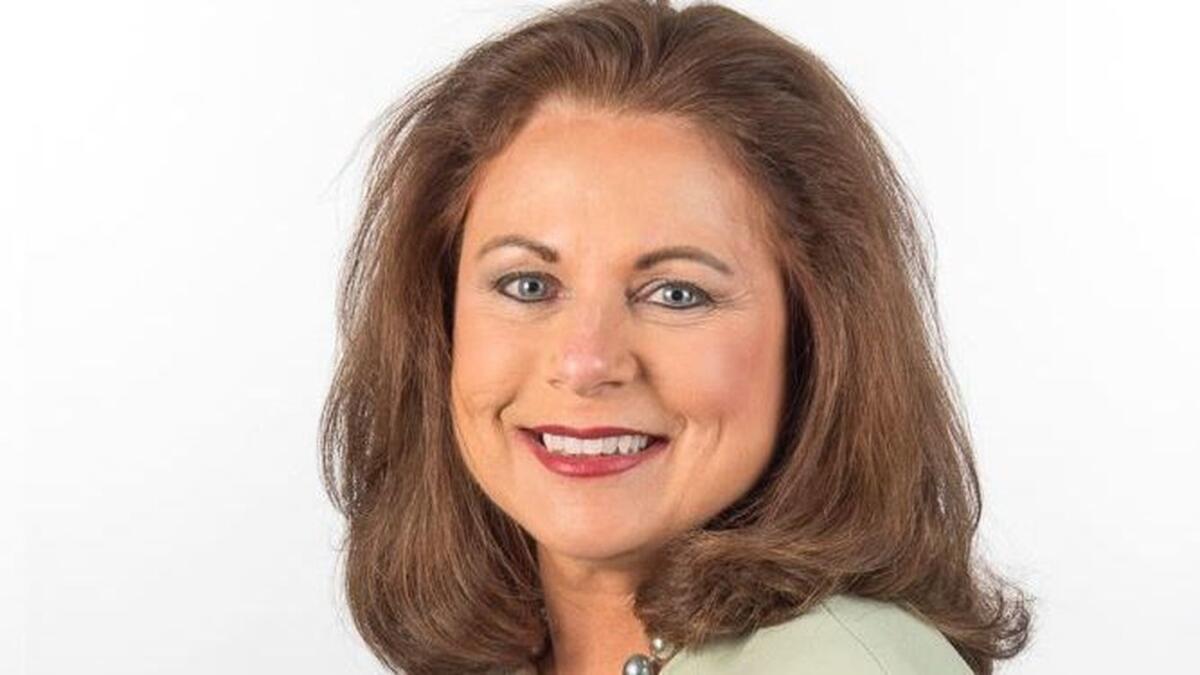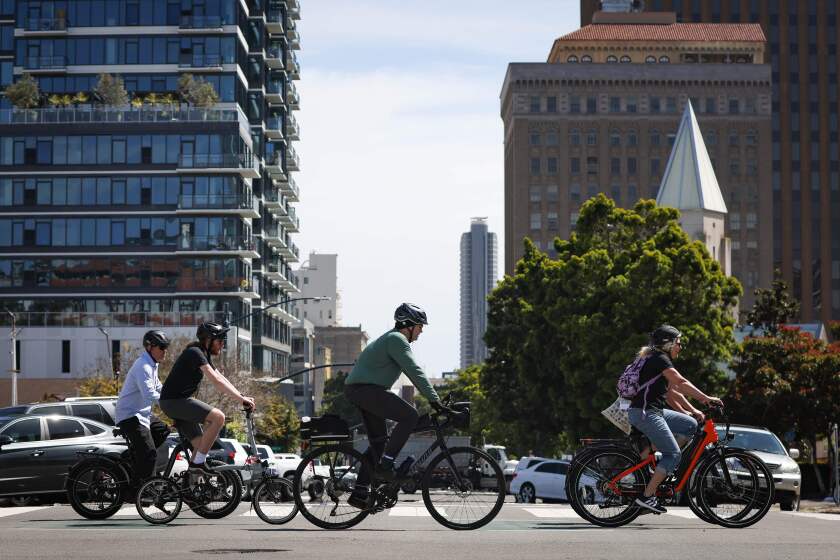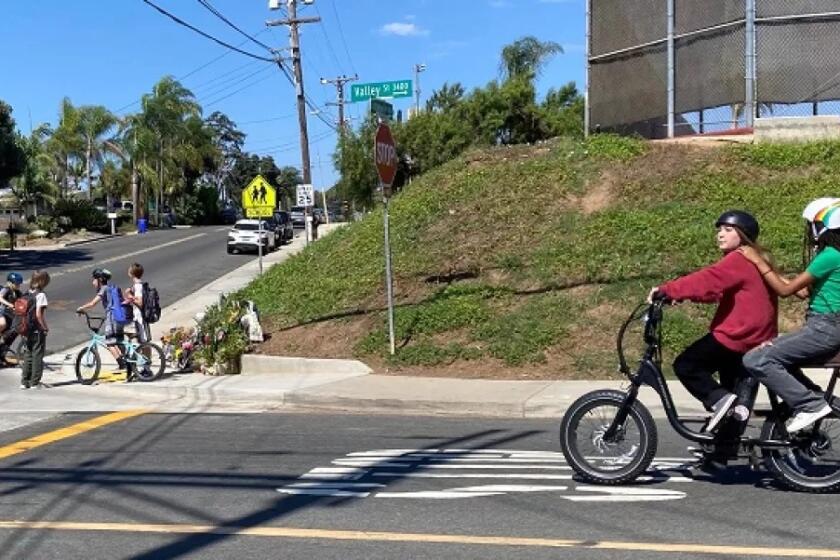A changing electorate has pushed Republicans out of this Assembly district
While all eyes were on the 49th Congressional District race to replace Rep. Darrell Issa, history was being made in the quiet, overlooked 76th Assembly District.
The district has been represented by a Republican for six years. But in November, voters have two Democrats to choose from. If they wanted to seek guidance from the state Democratic Party on how to decide, they will have to look elsewhere.
Former journalist and activist Elizabeth Warren and Encinitas City Councilwoman Tasha Boerner Horvath announced June 29 they have jointly agreed not to seek the California Democratic Party’s backing.
The decision comes after the two women secured top-two finishes in the June 5 primary — without running negative advertising against the other.
“Ms. Boerner Horvath and Ms. Warren are making a thoughtful, principled decision for the good of the Party and the people of their district, and that is the kind of leadership the people of our state have come to expect from Democrats,” California Democratic Party Chair Eric C. Bauman said in a statement.

Warren, of no relation to the U.S. senator of the same name, said the move will encourage party unity. Horvath said it would allow both campaigns to focus on engaging and turning out voters.
Democrats are celebrating the party’s ability to gain more power, while Republicans are figuring out how the district they’ve dominated managed to slip through their hands.
Republican Rocky Chavez represented the 76th since its formation in 2012. Considering it a safe bet for his party, Chavez opted to run for Issa’s seat.
“I couldn’t say no to the opportunity to be a congressman,” Chavez said. But he lost badly, and is among the Republicans who say they lost his Assembly seat because there were too many candidates and the party lacked the organization to prevail in the top-two primary system.
Plus, Chavez said, “The district’s changing. Those changing dynamics are what an Assembly member has to know when communicating to voters.”
Thad Kousser, professor of political science at UC San Diego, said Chavez was a “perfect fit” because he appealed to Latino and moderate voters.
Voter registration in the district has Republicans, Democrats and no-party-preference voters each making up roughly one-third of the electorate, at 33%, 32% and 27%, respectively.
Registered Republicans have been decreasing in the district, falling from 40% in 2012 to 36% in 2016. Unaffiliated voters are on the rise, like they have all throughout the state.
The boundaries of the district fall within the mostly San Diego County- based 49th Congressional District, where Democrats had been organizing to try and replace Issa. Democrats said their investment in capturing a U.S. House seat led a wave of apathetic voters to the polls in the Assembly district, too.
“This is a direct result of the organizing race in the 49th,” said Terra Lawson-Remer with the political action committee Flip the 49th.
This anticipated rise of Democratic voters was one of the reasons Horvath chose to enter the race. “We knew there would be a strong force of Democrats coming out. The numbers have been steadily changing with time,” she said.
Preliminary turnout estimates suggest 34% of voters showed up, compared with 31% in the 2016 primary, according to the San Diego County Registar’s Office. Voter turnout for the 76th state assembly primary in 2016 was 31%.
Republican candidates thought one of them would make it to the top-two, but businessman Phil Graham, financial consultant Thomas Krouse, San Dieguito Union High School District board member Maureen “Mo” Muir, Vista City Councilwoman Amanda Rigby and former Encinitas Mayor Jerome Stocks were shut out. Graham was the leading Republican candidate with 21% of the vote at 23,131 votes. No other Republican earned more than 9%.
“We had too many candidates,” said Tony Krvaric, chairman of the Republican Party of San Diego County. “We encouraged others to drop out, but only one did” — businessman Brian Wimmer. He still received 840 votes.
The candidates all held the same positions, mainly repealing the state’s new gas tax and ending the new “sanctuary” state policy.
“A lot of Republicans were dividing the vote. They seemed to have the same message,” Chavez said.
Graham earned the two-thirds votes necessary for the local party’s endorsement in April. For any Republican to stand a chance, “realistically, it would require getting the party endorsement,” Krouse said.
Instead of rallying behind Graham or encouraging others to bow out of the race, Republicans never regained control.
Republicans blame the shutout on the top-two primary, which critics think should be replaced.
“The Democrats were able to steal this one due to the top-two system,” Krvaric said.
Krouse said the system should be replaced with a ranked choice voting method, where the candidate with the most first-place votes wins. “If we had that, then I believe this would have been different,” he said.
Warren argued that people’s frustration with the status quo of political parties spurred a change.
“Almost a third of my voters are no party preference. They don’t trust the parties to represent them. People told me, ‘My generation does not care about parties. We care about issues,’” said Warren, a former newspaper reporter, public relations specialist and activist.
Warren claimed 26% of the vote with 28,710 ballots cast for her, while Horvath finished second with 25% and 27,530 votes.
Horvath is the more experienced politician, having served on the Encinitas City Council, the City of Encinitas Planning Commission and as a community leader for students’ safety in schools.
No matter what, “This is going to be a historic victory. No Democrat or woman has represented this district before,” Horvath said.
In the congressional race, Democrats spent $1.6 million on negative ads attacking Chavez for voting to extend Gov. Jerry Brown’s climate program known as cap-and-trade. It’s no secret they viewed him as the biggest threat toward capturing the seat, and the ads might tarnish him with GOP voters. The strategy worked, and Chavez finished sixth.
He plans to run again for the Assembly seat in an attempt to return to Sacramento. “I’m going to be coming back. I’m not done yet,” he said.
-- Michael Livingston is a reporter for the Los Angeles Times.
Sign up for the Encinitas Advocate newsletter
Top stories from Encinitas every Friday for free.
You may occasionally receive promotional content from the Encinitas Advocate.





